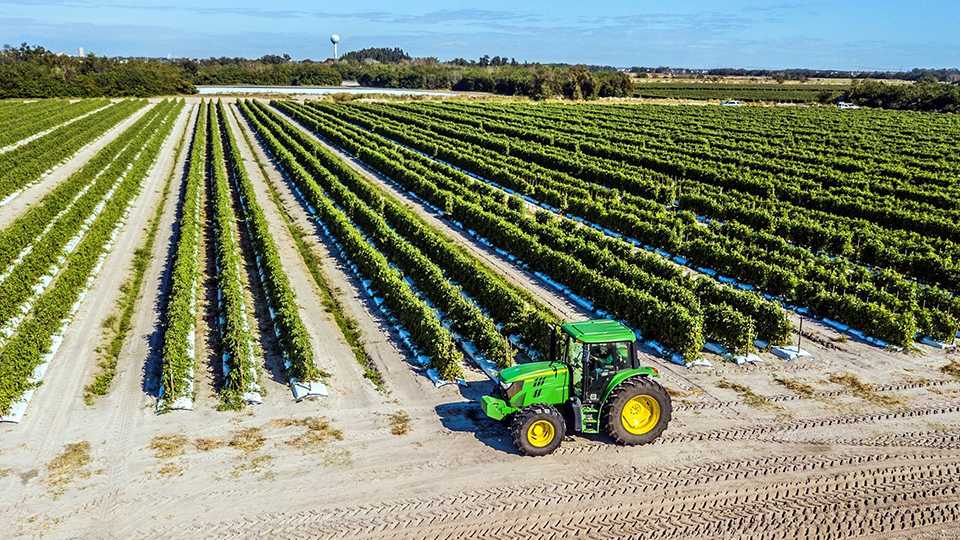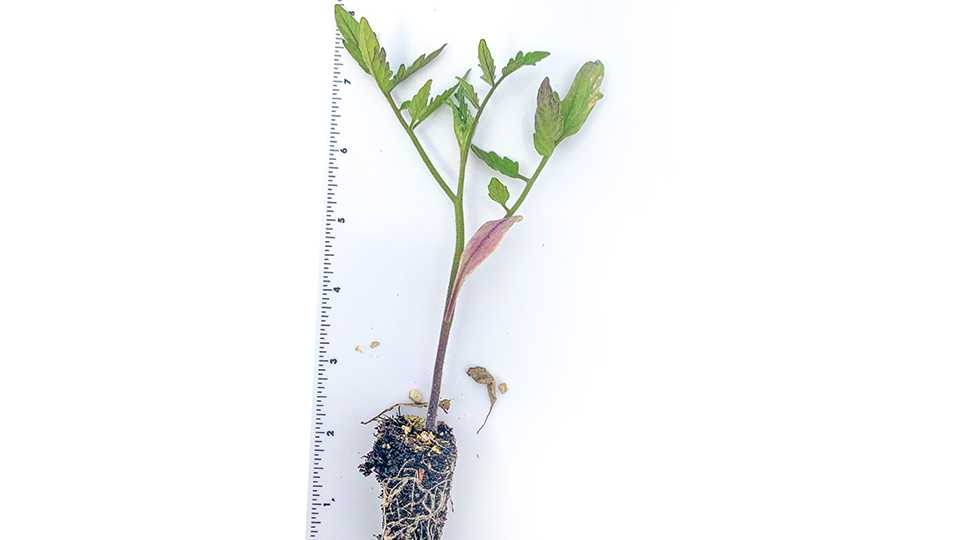How The DiMare Company Tames a Wild Fresh Tomatoes Market
When Brian Souza first earned his pest control adviser (PCA) license in agriculture, he wondered how he’d stave off the boredom of working with a single crop year after year. Souza, whose family owned a ranch, grew up on the farm, eventually becoming a field checker after high school and into college. He crossed paths with tomato producer The DiMare Company when he worked as a field checker on their farm. The operation invited him back, eventually keeping him on staff year-round to help him pay for college.
Armed with an associate’s degree in agricultural business, a bachelor’s degree in biology, and his PCA license, Souza has spent the last decade working for the company that gave him one of his first paying gigs. Today, he certainly knows his way around a tomato.
He’s not too hung up on getting bored, either. He’s learned just how volatile the world of fresh market tomatoes can be.
“Every year is completely different,” he says. “There’s always some new pest or disease pressure to stay on top of. I always wonder what new thing will be thrown at me this year.”
Here are the challenges DiMare deals with regularly and how Souza faces them down.
Smart Tech Gives Same Yields on Fewer Acres
Ask any California grower the top three issues they deal with annually, and you’ll likely get the same three responses: labor, government regulations, and water. DiMare deals with those things, too.
It’s the approach to those problems that has kept the DiMare family in business for three generations. It’s weathered challenges that forced some of the big players in the California tomato industry to shut their doors in recent years.
While fewer fresh market tomato growers likely means more market share for the operations that are still afloat, Souza notes the way technology has helped growers do more with less.
“From computer systems to irrigation systems to fertilizer and pesticide technologies, these tools have helped us grow more efficiently,” he says. “We’re able to grow a higher crop yield, which means growing fewer acres and, ultimately, reducing the cost of labor.”
This is huge for DiMare, an operation that handpicks its entire crop.
The process starts with the farm selecting the varieties it wants to grow and bringing them to the greenhouse growers it works with. Once the transplants are ready to go into the field, DiMare takes over.
Irrigating with Uncertain Water Resources
There are a lot of things farmers accept as being out of their control. Mother Nature usually tops that list. And in perpetually drought-stricken California, that can be a big problem.
DiMare competes with its neighbors near and far, not only to get the best land for growing, but also to get the water it’s been promised. DiMare is in an irrigation district with relatively good water availability, but nothing is guaranteed.
“We had a wet December until the Lord turned off the faucet,” Souza says. “The snowpack in the Sierra filled the reservoirs the last couple of years as well, but we’re not sure how much of that is left for this year.”
Souza says the farm sometimes does its best work during drought years. That’s because it is able to control everything from pre-wetting the beds to supplying each field with a consistent and precise amount of moisture.
That strategy is not without risk. No one can predict when the faucet will come back on. Some years, that means wasting a valuable resource on unnecessary irrigation.
Piece Rate Threatened by Minimum Wage Laws
Although technology has helped the farm reduce its labor needs, it still needs plenty of hands on deck to get the tomatoes out the door. Souza says the farm is lucky. The labor issues DiMare endured seven years ago have stabilized.
In the absence of mechanical harvesters skilled enough to pluck the crop gently, the farm attracts labor by staying competitive with its piece rate and having a high-quality field in which workers have a lot to pick and can make a lot of money for their efforts.
This could change. The Golden State’s upcoming minimum wage spike will rise from $13 per hour for operations with more than 26 employees to $15 per hour in 2022.
“Good old California is going to make us pay, which means we won’t be able to stay as competitive on the piece rate,” says Souza, who explains that the state’s other job-related regulations, such as those requiring regular mandatory breaks for employees who work a certain amount of hours, also reduce productivity and the length of the work day. One saving grace is that the operation is in a region with relatively affordable housing compared to the rest of the state.
Of all the challenges the farm works to overcome, the regulations issue is the one that keeps Souza up at night. These regulations are most frightening to growers of labor-intensive crops because it threatens a farm’s ability to compete.
“If we don’t become more mechanized in the future,” Souza says, “the future doesn’t look very bright for the fresh market overall.”
The Fresh Market Factor
The weather is a big unknown in any situation, but that doesn’t mean DiMare is saving for a rainy day. No farm enters the fresh market game unless it’s prepared for an abundance of possibilities.
“If you want to make a lot of money, you can make a lot of money in the fresh market,” Souza says. “You can also lose a lot of money — that’s the beauty and the curse of the fresh market.”
DiMare works to overcome this unpredictability by consistently delivering the highest-quality product. This strategy is two-fold: Not only will the industry continue to associate the DiMare name with a substantially better tomato during feast years, but the operation’s reputation will also help to carry it during periods of famine.
“We never know what the market will do, but we hope that people trust us and will buy from us when there’s a hot May and not a lot of product is coming in,” Souza says. “We have to make sure we have product when the market hits, otherwise, we’re screwed.”
This comes down to preventative crop protection and proper field planning. DiMare is proactive about spraying, and it spreads out its growing days by slowly seeding the crop to avoid harvesting everything at once. While there’s nothing particularly innovative about these methods of managing the fresh market factor, it speaks to how growers can leverage their best management practices. So far, it’s worked for DiMare.
“If you have the best quality and can get the highest possible yield out of your crop, you can set yourself up for success and weather the storm when the market is down,” Souza says. “You do what you can to control the quality and the yield, and you let the market worry about itself.”

















